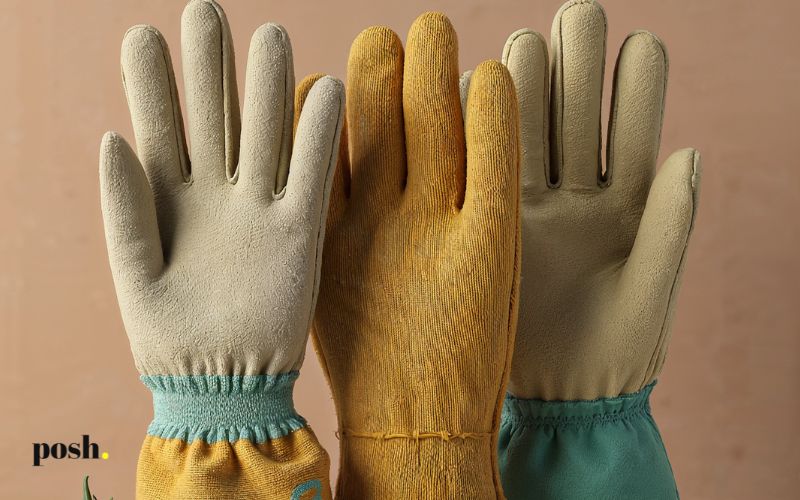How To Cook The Perfect Steak On The BBQ | Posh Living Magazine

Key Takeaways -
- Select high-quality, well-marbled steaks like ribeye or strip for the best flavour and tenderness.
- Preheat and clean your grill to ensure a perfect sear and prevent sticking.
- Use a meat thermometer to gauge doneness, avoiding the common mistake of overcooking accurately.
- Allow steaks to rest post-grilling to redistribute juices for a succulent, flavorful finish.
Do you love a good BBQ steak? It's popular because it's delicious and perfect for any occasion. Grilling the perfect steak is an art that combines great flavour with the right cooking technique.
We will explore why grilling steak has remained a favourite and how you can get great results every time. Whether you're new to grilling or have been doing it for years, mastering your steak grilling skills is key.
So, let's heat up the grill and learn how to cook steak that sizzles and impresses with every bite.

Selecting the Right Steak
Types of Steak Cuts
When it comes to grilling, beef steak is the most popular choice. Popular choices like ribeye, strip steaks, sirloin, filet mignon and tenderloin bring unique flavours and textures to the BBQ.
Ribeye is known for its rich marbling, which enhances flavour, while a strip steak offers a balance of tenderness and taste. Filet mignon is the most tender of steaks but has a milder flavour.
Sirloin provides a leaner option without sacrificing juiciness, and tenderloins are prized for their buttery texture.
What to Look for When Buying Steak
The key to a great grilled steak starts at the store. Look for steaks with a bright red colour, indicating freshness. Marbling, the little white flecks of fat within the meat, is crucial for flavour and should be evenly distributed.
Lastly, consider the thickness of the steak; a thicker cut allows for a charred exterior while maintaining a juicy interior.
Preparing Steak for Grilling
Before grilling, let your steak reach room temperature for about 15-30 minutes; this promotes even cooking. Seasoning should be simple yet effective—generous amounts of salt and pepper are essential.
For an enhanced flavour, use kosher salt with a coarser grain and freshly cracked black pepper. You can also experiment with fresh herbs such as thyme, rosemary, or sage to add a unique twist to your steak.
Equipment and Setup
Choosing the Right Grill
Selecting the right grill can make all the difference in your BBQ experience. Charcoal grills are beloved for imparting a smoky flavour that's hard to replicate with other methods, making them a favourite among purists.
They require more skill to manage the heat but reward you with that classic BBQ taste. Gas grills, on the other hand, offer convenience and precise temperature control, making them ideal for those who value consistency and ease of use.
Each BBQ grill type has merits, so the choice depends on your preference and grilling style (1).
Necessary Grilling Tools
Having the right grilling tools is essential for achieving perfect results every time you grill steak. Here's what you'll need:
- Long-handled tongs: These allow you to flip steaks safely, keeping your hands away from the heat.
- Meat thermometer: Essential for checking steak doneness accurately, ensuring perfect results without guesswork.
- Grill brush: Keeps your grill grates clean, preventing old residues from affecting the flavour and quality of your steak.
How To Cook Steak On BBQ Grill
Step 1: Prepare the Grill

- Begin by preheating your grill to a high temperature, ideally around 450-500°F. This high heat is crucial for achieving your steak's well-seared, flavorful crust.
- Take the time to clean the grill thoroughly to ensure no leftover residue could affect the taste of your steak.
- Apply a light coating of oil to the grates to prevent the steak from sticking. This helps achieve a clean release without tearing the meat.
Step 2: Season Steak
- Generously season both sides of the steak with salt and pepper. This simple seasoning is key to enhancing the meat's natural flavours.
- Allow the seasoned steak to rest at room temperature for 15-30 minutes. This step is vital as it helps the seasoning to penetrate deeper into the steak and ensures a more uniform cook throughout the meat.
Step 3: Sear the Steak
- Place the steak directly over the high heat to start the grilling process.
- Sear each side of the steak for approximately 1-1.5 minutes. This quick, high-heat method helps to lock in the juices by forming a delicious crust that encapsulates the meat.
Step 4: Cook the Steak
- After achieving a good sear, move the steak to a cooler part of the grill, setting it to indirect medium heat.
- Continue cooking the steak to your preferred level of doneness. Here are the temperatures to aim for based on how you like your steak cooked:
- Rare: 120-130°F
- Medium-rare: 130-135°F
- Medium: 140-145°F
- Medium-well: 150-155°F
- Well-done: 160°F and above
- Flip the steak only once during the entire cooking process. This method lessens handling and helps maintain an even crust on both sides of the steak while also preventing overcooking.
Step 5: Rest the Steak
- Once the steak reaches your desired level of doneness, remove it from the grill.
- Let the steaks rest for approximately 5-10 minutes before slicing. This resting phase is crucial as it allows the juices to redistribute within the steak, ensuring each bite is as juicy and flavorful as possible.
Common Mistakes to Avoid When Grilling Steaks

Grilling the perfect steak is an art that requires attention to detail. Here are some common pitfalls to steer clear of:
- Overcooking: It’s easy to leave steaks on the grill for too long, especially if you aim for well-done. Use a meat thermometer to ensure precise cooking and avoid dry, tough meat.
- Insufficient Seasoning: A simple seasoning of salt and pepper goes a long way. Be generous and season your steak for at least 15 minutes before it hits the grill to enhance its natural flavours.
- Not Allowing Resting Time: Always let your steak rest for 5-10 minutes after grilling. This allows the juices to redistribute throughout the steak, making every bite succulent.
- Avoiding Grilling Straight from the Fridge: Allow your steak to reach room temperature before grilling. This ensures that the steak cooks evenly and achieves optimal tenderness.
- Not Finishing Thick Cuts in the Oven: Consider finishing the steak in the oven after searing for thicker cuts like a double-bone ribeye. This method helps achieve an even doneness without burning the exterior.
Frequently Asked Questions
Is Too Much Smoke from a Charcoal Grill Bad for Grilling Steak?
Too much smoke from a charcoal grill can impart an overly bitter flavour to steaks, overshadowing their natural taste.
While a moderate amount of smoke enhances the smoky aroma and flavour desirable in grilled steaks, excessive smoke due to fat drippings or too much charcoal can lead to an unpleasant taste.
To control the smoke level, maintain a clean grill, use the right amount of charcoal, and manage the fat trimmings on your steaks.
What's the Best Steak Cut if I Want to Achieve a Medium Doneness?
The best steak cuts for achieving perfect medium doneness are those that are well-marbled and thick enough to sear on the outside while reaching the ideal internal temperature gradually.
Ribeye and New York strips are excellent choices due to their fat content and texture. At medium doneness, they allow a juicy, flavorful finish. Thicker cuts, around 1 to 1.5 inches, typically yield the best results, as they provide ample time for the centre to warm without overcooking the exterior.
Can I Grill Frozen Steaks If I Forget to Thaw Them?
Grilling frozen steaks is technically possible, but it's not recommended for optimal results. Frozen steaks cook unevenly, leaving a charred exterior before the inside reaches the desired doneness.
Always thaw your steaks completely in the refrigerator or quickly in cold water before grilling for the best flavour and texture. This ensures even cooking and preserves the meat's natural juiciness.
Is There a Difference in Grilling Time or Technique for Bone-In vs. Boneless Steaks?
Yes, there is a difference in grilling time and technique regarding bone-in versus boneless steaks. Bone-in steaks usually take longer to cook because the bone can insulate part of the meat, slowing the cooking process.
This can be advantageous as it allows more time for flavour to develop without overcooking the meat. When grilling bone-in steaks, it's often beneficial to use indirect heat for a portion of the cooking time to achieve even doneness.
Conclusion

In conclusion, mastering the art of grilling the perfect steak on a BBQ grill involves selecting the right cut, preparing your grill and steak correctly, and understanding the nuances of cooking times and techniques.
Avoiding common pitfalls such as overcooking, underseasoning, and improper heat management can enhance the natural flavours and achieve the desired doneness.
Whether you're a novice or a seasoned grill master, these guidelines will help you impress with delicious, perfectly grilled steaks at your next BBQ.
Sources -












